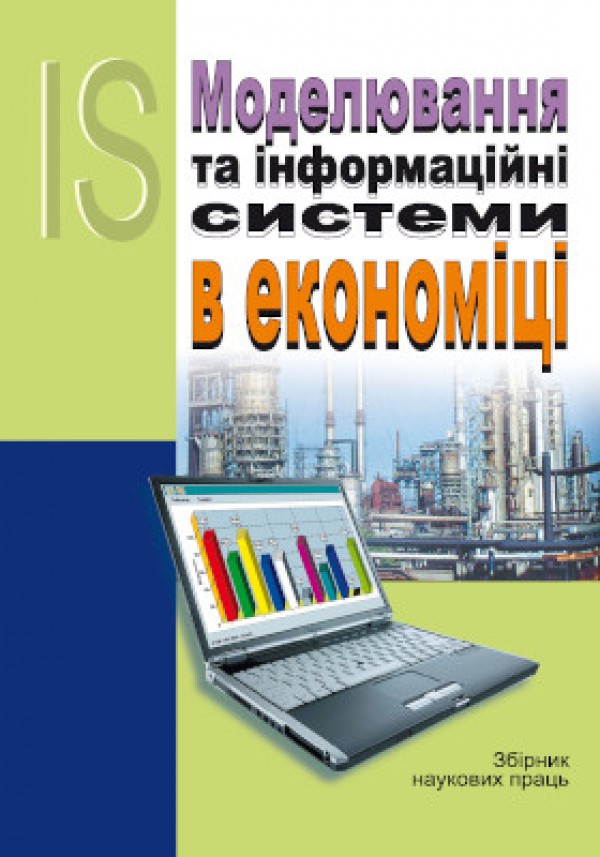
Modeling and Information System in Economics
ISSN 2708-9746
Про одну з ситуаційних моделей управління інформаційною безпекою підприємства
About one of the situational models of the information security management of the enterprise
DOI:
10.33111/mise.100.13
Анотація: Теорія управління інформаційною безпекою економічних систем створила багато ефективних механізмів швидкого і точного вибору управляючих дій на об’єкт за даними його стану. До найважливіших серед них слід віднести концепцію ситуаційного управління складними об’єктами на основі різноманітних технологій моделювання. Серед загальної кількості моделей і методів управління інформаційною безпекою організації систем найконструктивнішим для дослідження критичних процесів можуть бути використані ситуаційні. Головною перевагою і щільною якістю таких моделей є корисність для кількісного прогнозу інформаційних ризиків, а також для апріорної оцінки та оптимізації заходів щодо їх зменшення або перерозподілу. Більш того, якісний і кількісний аналіз ситуаційних моделей може також сприяти не тільки виявленню «вузьких місць», але і розробці найефективніших стратегій удосконалення інформаційної безпеки. В якості прикладу розглядається задача одного класу моделей — так званих діаграм причинно-наслідкових зв’язків. До таких моделей звичайно відносять: а) мережу стохастичної або детермінованої структури; б) граф станів і переходів; в) дерево надзвичайних станів і дерево подій. До того ж основними перевагами таких семантичних моделей слід віднести наочність, інформативність і можливість враховувати велику кількість тих суттєвих факторів, які реально супроводжують функціонування конкретних компонентів організаційної системи. Особливість до практичного застосування даних діаграм пов’язана з можливістю переходу від семантичного (змістовного) рівня представлення об’єктів і процесів, до синтаксичного (знакового). Досягається цей процес наступною формалізацією вказаних діаграм, яка проводиться з метою отримання на їх основі відповідних аналітичних моделей, що найбільш пристосовані для аналізу і оброблення за допомогою сучасних математичних і машинних методів.
Abstract: . The theory of information security management of economic systems has created many effective mechanisms for quick and accurate selection of control actions for the object according to its condition. Among the most important among them is the concept of situational management of complex objects based on various modeling technologies. Among the total number of models and methods of information security management of the organization of systems the most constructive for the study of critical processes can be used situational. The main advantage and dense quality of such models is the usefulness for quantitative forecasting of information risks, as well as for a priori assessment and optimization of measures to reduce or redistribute them. Moreover, qualitative and quantitative analysis of situational models can also help not only to identify «bottlenecks», but also to develop the most effective strategies to improve information security. As an example, we consider the problem of one class of models — the so-called diagrams of causation. Such models usually include: a) a network of stochastic or deterministic structure; b) graph of states and transitions; c) emergency tree and event tree. In addition, the main advantages of such semantic models include clarity, informativeness and the ability to take into account a large number of those significant factors that actually accompany the functioning of specific components of the organizational system. The peculiarity of the practical application of these diagrams is associated with the possibility of transition from the semantic (content) level of representation of objects and processes, to the syntactic (symbolic). This process is achieved by the following formalization of these diagrams, which is carried out in order to obtain on their basis the appropriate analytical models that are best suited for analysis and processing using modern mathematical and machine methods
Ключові слова: дерево подій; ситуаційна модель; діаграма причинно-наслідкових зв’язків; надзвичайна ситуація.
Key words: event tree; situational model; causal diagram; emergency situation.
УДК: 65.012.8
UDC: 65.012.8
To cite paper
In APA style
Biehun, A., Osypova, O., & Urdenko, O. (2020). About one of the situational models of the information security management of the enterprise. Modeling and Information System in Economics, 100, 39-50. http://doi.org/10.33111/mise.100.13
In MON style
Бєгун А.В., Осипова О.І., Урденко О.Г. Про одну з ситуаційних моделей управління інформаційною безпекою підприємства. Моделювання та інформаційні системи в економіці. 2020. № 100. С. 39-50. http://doi.org/10.33111/mise.100.13 (дата звернення: 11.04.2025).
With transliteration
Biehun, A., Osypova, O., Urdenko, O. (2020) Pro odnu z sytuatsiinykh modelei upravlinnia informatsiinoiu bezpekoiu pidpryiemstva [About one of the situational models of the information security management of the enterprise]. Modeling and Information System in Economics, no. 100. pp. 39-50. http://doi.org/10.33111/mise.100.13 [in Ukrainian] (accessed 11 Apr 2025).
 # 100 / 2020
# 100 / 2020
Download Paper
73
Views
18
Downloads
0
Cited by
- Белов П.Г. Теоретические основы системной инженерии безопасности. — М.: ГНТП «Безопасность», 1996. — 424 с.
- Дюбуа Д., Прад А. Теория возможностей. Приложения к представлению знаний в информатике. — М.: Радио и связь, 1990. — 288 с.
- В.І. Жлуктенко, А.В. Бєгун. Стохастичні моделі в економіці:монографія — К.:КНЕУ — 2007. — 288 с.
- Kumamoto H., Henley E. Probabiliustic risk assessment and management for engineers and scientists IEEE Press. 1996. — 597 p.
- ISO/IEC TR 18044:2004 «Information technology. Security techniques. Information security incident management».
- ISO/IEC 27035:2011 «Information technology. Security techniques. Information security incident management».
- BS 25999-1:2006 «Business continuity management. Code of practice».

